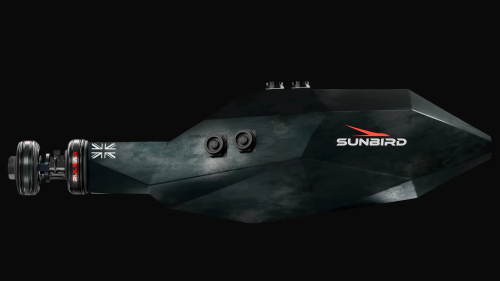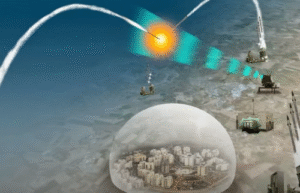A revolutionary leap in space propulsion may soon reshape how humanity explores the solar system. Pulsar Fusion, a UK-based aerospace startup, is developing Sunbird, a next-generation fusion-powered rocket tug that could dramatically reduce travel time to destinations such as Mars.
Sunbird is not a conventional spacecraft. Instead, it acts as a space tug—a powerful orbital vehicle designed to dock with other spacecraft and provide an additional propulsion boost for deep-space missions. What sets Sunbird apart is its ambitious use of nuclear fusion propulsion, a technology long considered the “holy grail” of space travel.
Advanced Fusion Engine Concept
Pulsar Fusion plans to integrate a Direct Fusion Drive (DFD) or potentially a Dual Direct Fusion Drive, both of which rely on high-energy nuclear fusion reactions. The fuel mixture under consideration includes deuterium and helium-3, a clean and highly efficient combination capable of generating enormous thrust without producing harmful radioactive waste.
If successful, this propulsion method would offer a breakthrough alternative to chemical rockets and ion engines currently used in space missions.
Stunning Speeds and Reduced Travel Time
Early theoretical models suggest that Sunbird could reach speeds of up to 329,000 mph (529,000 km/h). At this velocity, travel across the inner solar system becomes significantly faster. Some projections claim that Sunbird could potentially reduce the journey to Mars to just 30 days, while other conservative estimates predict the trip time could be cut nearly in half—from today’s 7–8 months to roughly 3–4 months.
Either scenario represents a dramatic improvement and would pave the way for safer, more practical crewed missions to the Red Planet.
Reusable and Multi-Purpose Design
Sunbird is envisioned as a fully reusable orbital tug, capable of repeated missions. Rather than launching from Earth repeatedly, it would remain in space, operating from orbital docks and assisting multiple spacecraft over time. This approach could drastically reduce mission costs and expand the range of what commercial and governmental space agencies can achieve.
The tug could support missions involving satellites, lunar logistics, cargo transport, and deep-space exploration vessels.
Testing Timeline and Development Plans
Pulsar Fusion aims to conduct in-orbit testing by 2027, marking a crucial milestone for fusion propulsion technology. The company has already built advanced propulsion testing facilities in the UK and is preparing to test components such as the Power Processing Unit (PPU)—a key element of the engine system.
Successful tests would place Pulsar Fusion among the leading innovators driving the next wave of space propulsion.
Challenges and Technical Barriers
Despite the enthusiasm, experts caution that Sunbird is currently a conceptual and prototype-level project. Achieving stable nuclear fusion in space, maintaining consistent thrust, and ensuring long-term safety remain major scientific hurdles.
Fusion systems also require complex plasma control, advanced magnetic confinement, and robust thermal management—all of which are still under development.
Additionally, costs associated with fusion propulsion research can be extremely high, requiring substantial funding and multi-phase development programs.
A Vision for the Future of Space Travel
If Pulsar Fusion succeeds, Sunbird could revolutionize how humanity approaches interplanetary exploration. Faster missions mean reduced radiation exposure for astronauts, more flexible launch windows, and the potential to support long-duration colonization efforts.
As the global space community watches closely, Sunbird stands as one of the most exciting and ambitious propulsion concepts in development today—offering a glimpse into a future where fusion engines push spacecraft across the solar system with unprecedented speed and efficiency.







